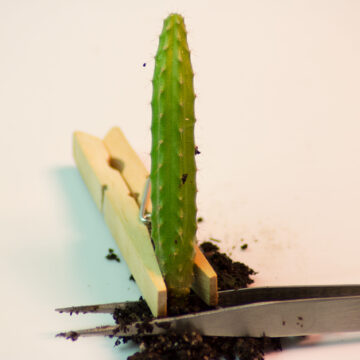Description
These seedlings were grown from our own stock of seeds and are several months in age. These seedlings are ideal for new growers who may not be confident growing from seeds or those who wish to get a good head start. Growing from seeds can be rewarding, but it is not for everyone. So to offer our buyers a wide variety of choices we are offering these seedlings already started. Average height about 1′-1.5″. These seedlings have great genetics and are fast growers. They’ve outperformed most of the cactus seeds we’ve ever grown. Seedlings will be shipped bare root. They can be gently transplanted into a general purpose cactus soil and will do well under fluorescent lights. They can be grown outdoors, but must be very gradually acclimated or they will sunburn or dry up. It would probably be best growing them indoors for one season (possibly two) and moving them outdoors the following summer. In areas where it freezes, they can be brought indoors for the cooler months.
Trichocereus bridgesii, also classified as Echinopsis lageniformis, is a bluish-green columnar cactus native to Boliva, which is also where these seeds are from. It resembles the more common San Pedro cactus (T. pachanoi) but typically has fewer, wider ribs and longer spines. In fact, many references to San Pedro in Bolivia are believed to actually be referring to bridgesii rather than pachanoi. This cactus has gained much popularity among cactus collectors in recent years. Like pachanoi, it has huge, white blooms that make it an attractive andscaping cactus. It grows a little bit slower than pachanoi but is still a rapid grower, making it one of several trichocereus species that work well as a grafting stock for slower-growing cacti such as astrophytum and ariocarpus. It can reach fifteen feet in height and tends to produce offsets rather easily. Trichocereus bridgesii is also easy to grow from seed, but its seedlings are more prone to turning purple than many other trichocereus species when exposed to sunlight. When this occurs, be sure to reduce their exposure. It is hardy to about 30 degrees Fahrenheit and should only be watered during active growth when the soil has dried out. During the winter in areas where temperatures are too cold, plants should be brought inside where they will go dormant (stop growing). Prior to entering dormancy (late September-early October), watering should be slowly reduced until it reaches none. Plants should be brought indoors and stored in a cool, dry, dark place. Since it is not growiing, it does not require any of these essentials. When breaking dormancy, a reverse process can be applied. This will ensure nice, even growth to your cacti and reduce the chance of infection due to overwatering when the cactus?s immune system is at rest.
Read our guide “How to Transplant a Cactus Seedling”
We ship live plants on Mondays and Tuesdays only, so please allow at least 1 week for shipping. SORRY, NO INTERNATIONAL SHIPPING ON LIVE PLANTS.
**Buyer is responsible for frozen plants. USPS is heated, so the plant will be fine unless you leave it at your door too long. But if you are in a cold area and cannot get the plant right away, signature confirmation can be added to the shipping cost. They will hold the plant until you pick it up.




